
New Photos
December 9, 2006
| This week we had several hard freezes, well down in the 20s. I haven't seen a dragonfly all week, and have seen very few butterflies. On Monday, there were still some Dainty Sulphurs and an Orange Sulfur flying weakly and perching often, but there's not much left for them to nectar on: not just the cold, but the extreme dryness is a problem. | |
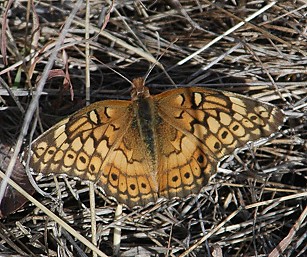 |
|
| On Thursday, the morning after another hard freeze, and with the temperature still in the 30s at noon, a glowing golden-orange butterfly startled from the short grass of the upper swale, flew about ten or fifteen yards, and landed again. I approached cautiously and was able to photograph this variegated fritillary, Euptoieta claudia, as it perched flat, out of the raw wind, wings spread to the sun. | |
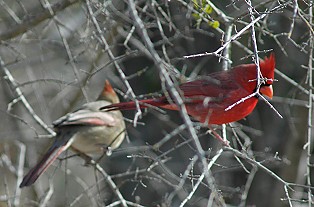 |
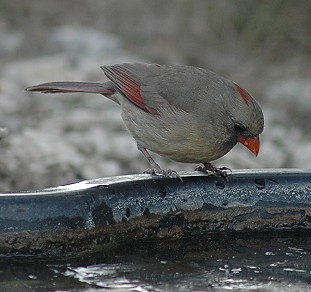 |
| Up at Fox Pavilion, a pair of cardinals sheltered in the leafless elbow-bush. This is excellent winter cover for birds, as it's open enough for them to get sun and feed safely below the tangle of twigs that makes photography so tricky. | "But it's frozen!" Though I had broken the ice on all levels of the waterhole at Fox, this cardinal looks dubiously at the ice floating in chunks on the surface. |
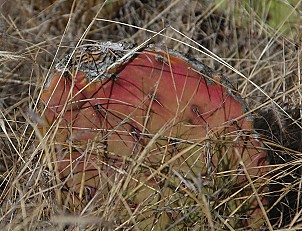 |
|
| Prickly pear pads may turn rosy or purplish for several reasons: drought, cold, or disease. This pad has all three problems, but the color is striking. | |
 |
|
| I'm a sucker for birds in pairs or groups...here two yellow-rumped warblers appear to be a pair, drinking (and bathing, but I didn't get that shot) in the upper pool of Owl Water. | |
 |
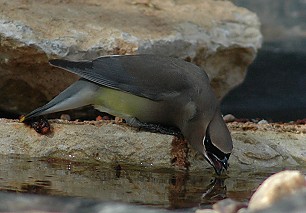 |
| After watching cedar waxwings come down in groups and crowd into the meager space of the water at Fox Pavilion...and then how they spread out at the water garden in the back yard...I designed Owl Water to have a linear beach for birds like them. Thursday, a flock arrived and seems to approve of that design. One of them, however, is watching the camera. | Not all the groups that came down lined up the same way. This cedar waxwing preferred the "drinking rock" and has flattened its crest completely. |
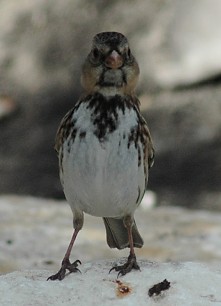 |
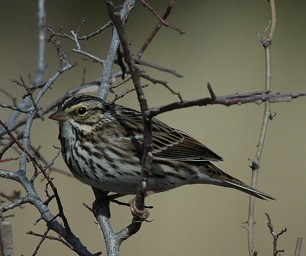 |
| Some birds crouch down when alarmed; this Harris's sparrow stood up tall and puffed out its cheek feathers. | Between the near brushpile and the water, there's a stunted little cedar elm barely more than knee-high. Some birds use it as a watch station between the two, preferring to check out the water and its surroundings very carefully before coming in to drink. This savannah sparrow, slightly puffed up because of the cold, paused there only a few seconds. |
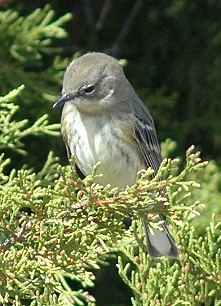 |
|
| Other birds approach the water by way of the big Ashe juniper just north of it. The yellow-rumped warblers often dive into the cedar, then come back out, looking down (like this one) to see if they approve of the company. | |
![]()

